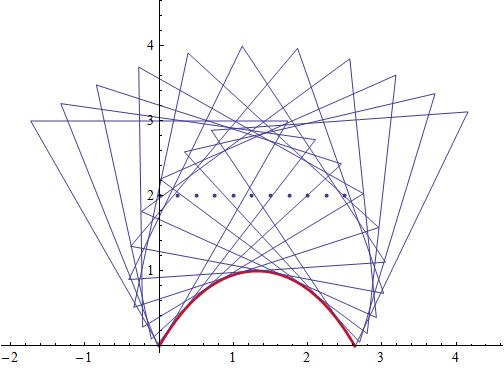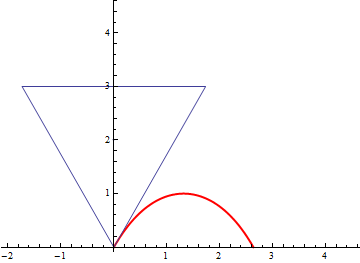How does the profile of the ground have to be, to be able to drive with triangular wheels (equilateral) and without bumps?
2 Answers
To drive without bumps, the center of the "wheels" must remain at a constant height while driving. In other words, the distance from the center of the wheel to the point on the wheel touching the ground added to the distance from the point on the ground to some base level must be constant.
Noting that the former distance is maximal when a vertex is touching the ground, we consider a triangular wheel with side lengths
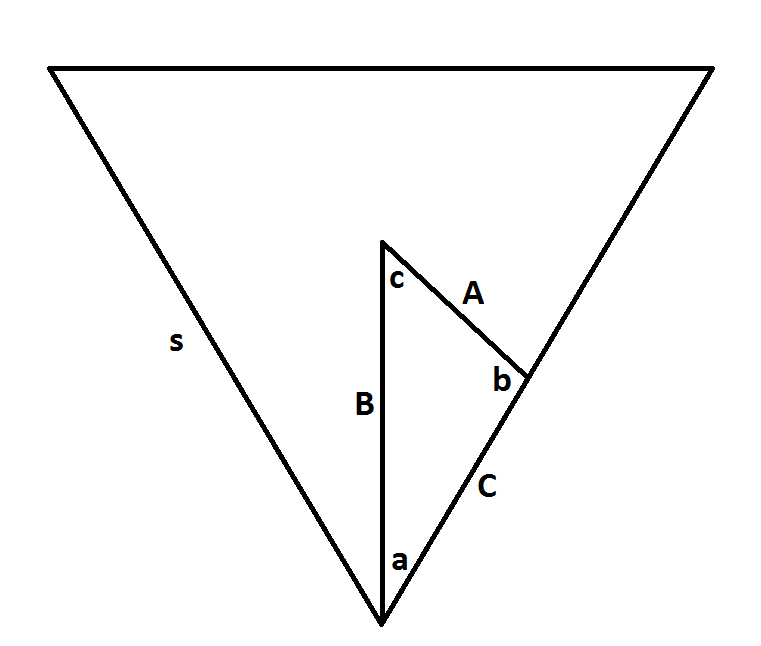
Referencing the above diagram, if the ground is touching point
We will now calculate
Note that as the wheel is equilateral, its vertices each have an angle of
With these, we can now put
#=(s/sqrt(3)sin(pi/6))/sin((5pi)/6-c)#
#=s/(2sqrt(3)sin((5pi)/6-c))#
Substituting this in for
#=s/sqrt(3)(1-1/(2sin((5pi)/6-c)))#
Adding in the point where
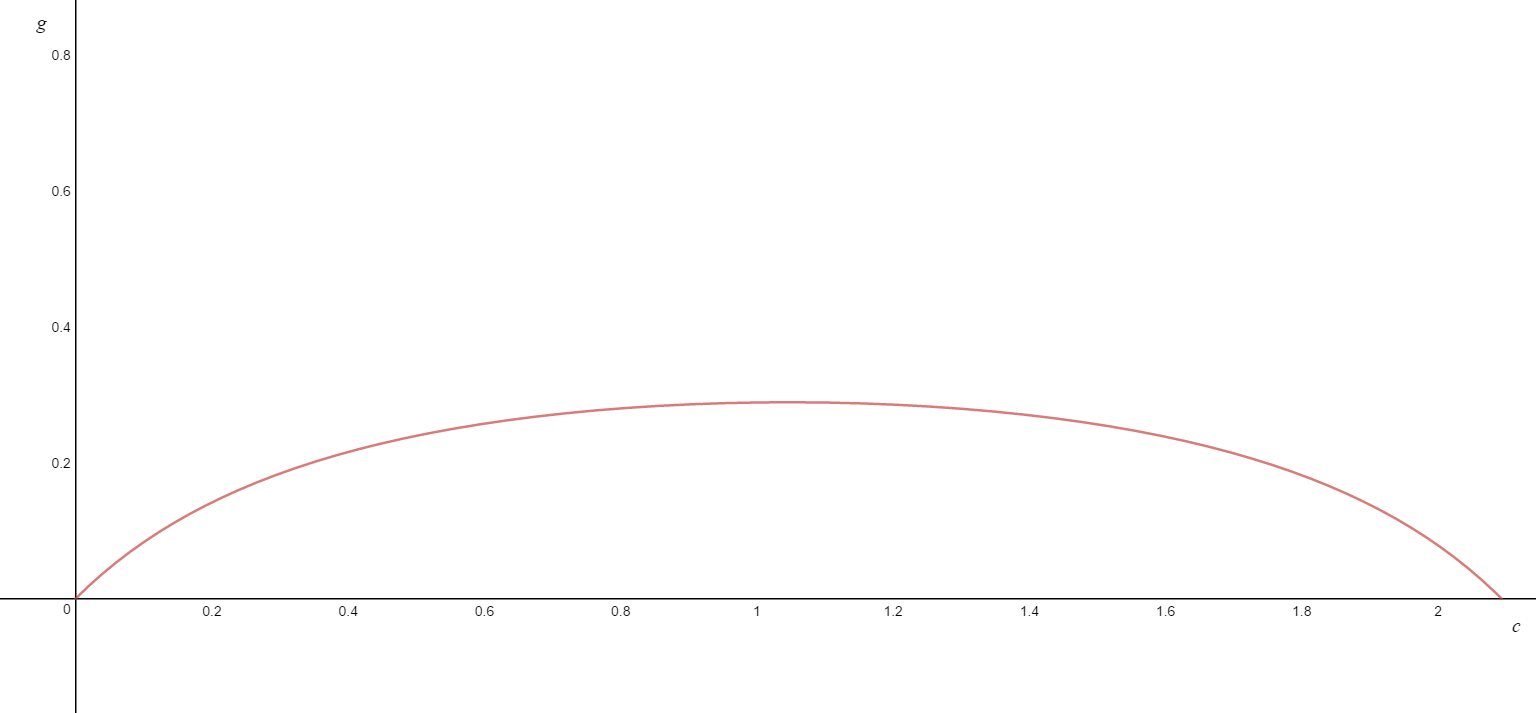
And, by symmetry, this pattern will repeat, giving us our full profile as

See below.
Explanation:
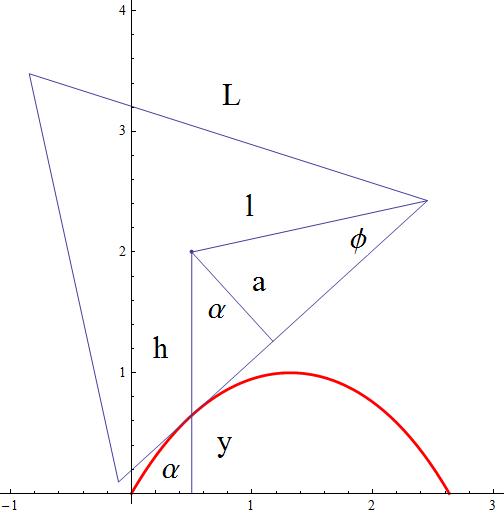
Calling
then
because
Substituting this last identity we get at
This is the differential equation governing the contact line
Making now
This is a separable differential equation. Solving we get
solving now for
and thus finally we obtain the contact line equation.
All those rare "wheels" have catenary support.
The period of this catenary is found by solving for
As a verification, making
